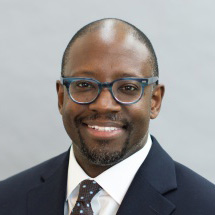 Large cities in the northeast like Boston, New York, Newark, Philadelphia, and so on, are often caricatured as wastelands of non-religious, unchurched, overtly secular theaters. Caricatures of this type seem odd given the fact that many of America’s oldest religious institutions are actively operating in those regions. One of my friends is quick to point out that every week people sit on church pews in northeastern churches that older than many states out west. For example, by looking at the Christian presence in the New York City area alone, research shows that the northeast might not be as religiously barren as many believe.
Large cities in the northeast like Boston, New York, Newark, Philadelphia, and so on, are often caricatured as wastelands of non-religious, unchurched, overtly secular theaters. Caricatures of this type seem odd given the fact that many of America’s oldest religious institutions are actively operating in those regions. One of my friends is quick to point out that every week people sit on church pews in northeastern churches that older than many states out west. For example, by looking at the Christian presence in the New York City area alone, research shows that the northeast might not be as religiously barren as many believe.
I recently contacted Tony Carnes, editor and publisher of A Journey through NYC Religions, to set the record straight on the New York City area. Since 2010, Carnes and his team have visited thousands of religious houses of worship, from all religious traditions cataloging the religious activity in New York City. In light of what he and his team have seen on the ground, Carnes has come to the conclusion that the best description of New York City is that it is a “post secular” city—a condition somewhere between a secular and sacred.
Within the Christian tradition alone Carnes reports, in the past two years there has, at times, been one new evangelical church founded every Sunday in Manhattan. “By September 2009,” writes Carnes, “there were 197 evangelical churches in Manhattan Center City, the part of the city below 125th Street on the West Side and 96th Street on the East Side. A majority were founded since 1988, 40% since 2000. The number of congregates in Manhattan Center City has tripled in ten years.”
Outside of Manhattan Center City, the number of evangelical and Pentecostal Christians is much greater and often goes unreported. Many of the churches outside of New York’s most expensive neighborhoods are populated by minorities and immigrants from Asia, Latin American, and Africa where Christianity is currently exploding. In all boroughs of New York City, the evangelical and Pentecostal Christians are growing. Carnes says that overall, “evangelical/Pentecostal Christians make up between 16-21% of the city, depending on how you count.” Roman Catholics make up about 36% of the metro New York population, and over 40% in New York City proper. Orthodox Christianity is present as well in New York City in smaller numbers.
In sum, in the total metropolitan New York City area (including the suburbs), Christians of all types make up 63 percent of the population. In fact, according to Carnes, “Nones,” the nonreligious, in NYC are less likely to be found here than in other major cities, including all areas of the South.
While these numbers obviously do not presume that all of those who identify as “Christian” have deeply rooted faiths and are actively involved on a weekly basis in parish life, it does call into question if calling New York a “secular city” is entirely accurate. In fact, New York City is such a hotbed of Judaism, Christianity, and Islam that New York’s mayor Bill De Blasio has found himself in a position of championing religious liberty.
What, then, is New York, and other large northern cities like her? They are religiously plural, politically progressive, “post secular” cities.

